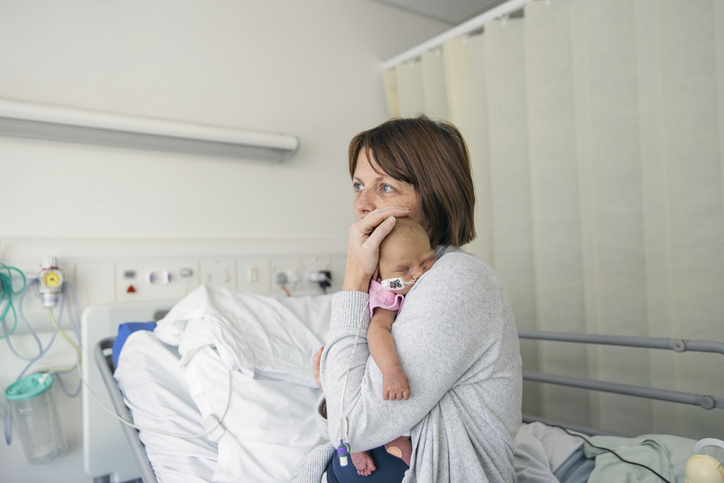Jaundice, also known as hyperbilirubinemia, is a common condition in newborns and occurs when there is a buildup of bilirubin in the baby’s blood, causing the newborn’s skin and eyes to have a yellowish tint. It is typically treated with phototherapy in a medical facility until the bilirubin levels decrease, but with a bili blanket, phototherapy treatment can also continue at home.
Jaundice is a common symptom of hemolytic disease of the fetus and newborn (HDFN), and it can have serious consequences if not treated proactively. It can vary in severity and duration, and it is treated with phototherapy until the bilirubin levels decrease. Once the baby has been discharged, phototherapy treatment can continue at home with the help of a bili blanket.
What is HDFN?
Hemolytic disease of the fetus and newborn (HDFN) is an immune-mediated red blood cell (RBC) disorder that occurs when a baby’s RBCs break down quickly, which is called hemolysis. HDFN is caused by a mismatch between a mother’s and her baby’s blood type (A, B, AB, or O) or Rhesus (Rh) factor (Rh-positive or Rh-negative) during pregnancy. Numerous antibodies to RBC antigens can be linked to HDFN, such as those from the ABO and Rh blood group systems.
HDFN and jaundice
Jaundice is a common symptom found in newborns affected by HDFN. As the baby’s red blood cells have been attacked and destroyed by the mother’s antibodies, anemia and jaundice develop. The newborn’s liver is not properly developed, and it is harder for the bilirubin to be eliminated from the blood.
If the bilirubin levels are not brought under control, the risk can be great for the newborn. In the most severe cases, the bilirubin can cross the blood-brain barrier, causing kernicterus, a serious complication of jaundice that can lead to long-term neurological damage or death.
What is phototherapy?
Phototherapy in an effective, noninvasive blue light therapy that breaks down the bilirubin in the baby’s blood. Depending on the severity of the jaundice, phototherapy may be required for a few days to a few weeks. It is the standard treatment for jaundice, and often, no further treatment is required.
Learn more about HDFN treatment and care
If jaundice levels have stabilized or are falling, it may be possible to continue phototherapy at home, with a bili blanket. Use of a bili blanket also helps prevent jaundice from reoccurring.
What is a bili blanket?
Also used in the neonatal intensive care unit (NICU) of the hospital, a bili blanket is a portable phototherapy device used to treat jaundice in a home setting, allowing a newborn affected by jaundice to be discharged and cared for at home.
It consists of a LED light covered by a fiber-optic pad to prevent direct contact. It can be used 24 hours a day, while the baby is feeding, sleeping or being held. Eye protection is required to avoid any damage to the baby’s eyes from the light.
Though a bili blanket is an effective treatment, not all hospitals will offer it, as it is expensive and the technology is rather new. If a bili blanket is not offered, doctors may recommend a longer hospital stay for the baby, and they may also recommend exposing the baby to natural sunlight at home after discharge.
For the best possible outcomes, it is recommended to keep the baby’s skin exposed to either phototherapy light or natural sunlight as much as possible.

